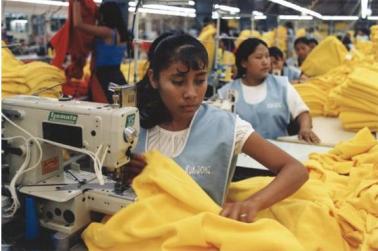
Uncategorized
The High Cost of Cheap: US Buying Habits After the Bangladesh Fires

Low wages for workers in factories outside the US is one way to keep costs down.
It’s a terrible fact: the reasons some brands can offer cheap clothing is because of the horrible working conditions in garment factories and the low wages paid to those workers. Last month, 1,100 factory workers died in the building collapse in Bangladesh. Many of these workers were laboring to make clothes for Americans. Yet, despite this tragedy and the news spotlight on manufacturing conditions in India, awareness within the US of where our cheap clothes come from is low. A new study from Harris Polls reveals that over half of Americans (56%) do not look to see where clothing items are manufactured before making purchases, while 44% do. This Harris Poll was conducted online within the United States between May 14 and 16, 2013 among 2,052 adults (aged 18 and over.) The results of the poll show that Americans consumers are aware about what happened. Seven in ten (69%) U.S. adults had heard about the building collapse, with older Americans (76% of 45-54 year olds and 86% of those 55+) more likely to have heard than those younger (49% of 18-34 year olds and 60% of 35-44 year olds). And, among those aware of the collapse, more than nine in ten (92%) are aware that it killed hundreds of clothing industry workers. But does this awareness change our purchasing habits? The answer is maybe, if we continue to be conscious and begin to read the labels inside our clothing.
Changing purchasing habits
While half (52%) of those aware that the collapse killed clothing workers say they will be no more or less likely to purchase clothes made in Bangladesh, almost half say their likelihood to do so will change. Almost two in five (39%) say they will be less likely to buy clothes made in Bangladesh and one in ten (9%) say they will be more likely to do so.
There are some interesting demographic differences in how this purchase behavior will change. Men are more likely than women to say it will not make them more or less likely (56% vs. 48%), while women are more likely to say it will make them less likely to purchase (42% vs. 34%). Having a child in the household also appears to be a factor, as those without children are more likely than those with to say they will be less likely to purchase clothes made in Bangladesh (42% vs. 29%).
There is also an interesting age difference, and this may indicate a new type of activism. While just 5% of those ages 55 and older say they will be more likely to purchase clothes made in Bangladesh, that number jumps to 18% of younger Americans aged 18-34. In the past, when things like this happen, Americans would “blame the country” and stop purchasing goods from there. Younger Americans are more intertwined with a global sense of community. This higher likelihood to purchase could be a sign that they are concerned about the workers themselves – if no one is buying the clothes, those who survived may find themselves out of work and in worse shape than just having poor working conditions. There is now easy answer until the companies outsourcing to the manufacturers insist on better safety conditions for the workers. There are labor rights groups lobbying to get retailers to stop outsourcing production to these dangerous factories, but few retailers have signed on. Some who have include PVH Corp., an American company that owns Calvin Klein and Tommy Hilfiger, and German retailer Tchibo. Think about that next time you buy clothes at Walmart or Gap.













0 comments